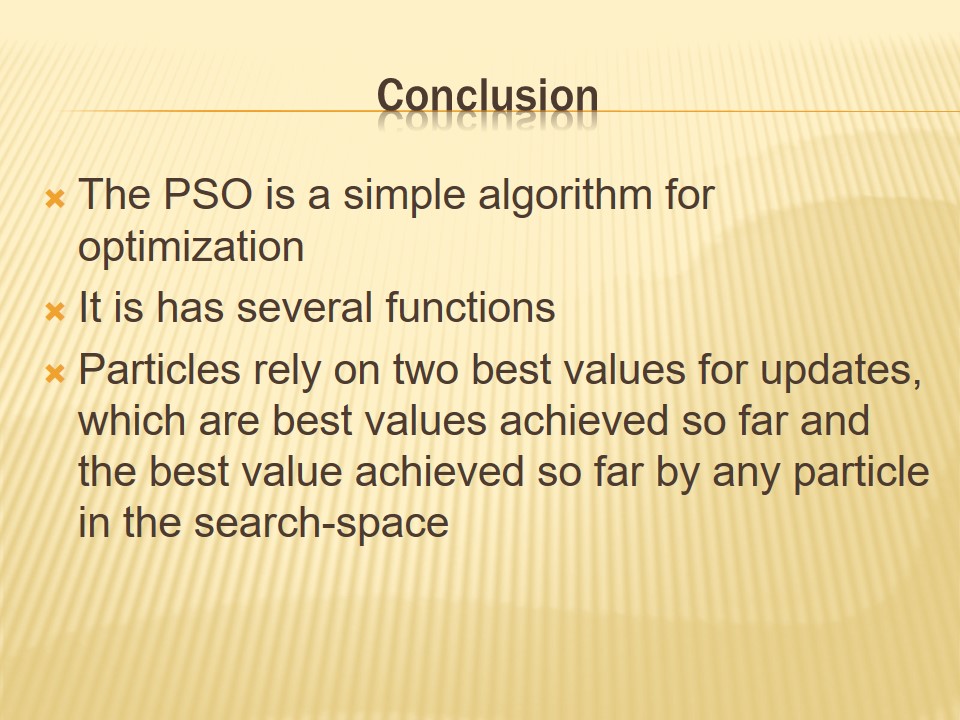What is Particle Swarm Optimization?
- Particle swarm optimization (PSO) is an artificial intelligence (AI) or a computational method for getting solutions to problems through maximization and minimization of numeric.
- Emanated from social behavior of bird flocking or fish schooling.
- Particles are the population of candidate solutions that move around in a search-space.
- Particles move within the search-space and therefore have velocity.
- Particles also move to find their best known positions.
- Particles move within the problem space by following the current optimum particles.
- Swarm particles work together and exchange information about the best known solutions.
- Particles rely on information within their neighborhood.
- Particles understand conditions of others in the neighborhood.
- The position of a particle with the best known fitness or solution guides other particles.
- The position helps in optimizing the particle’s velocity.
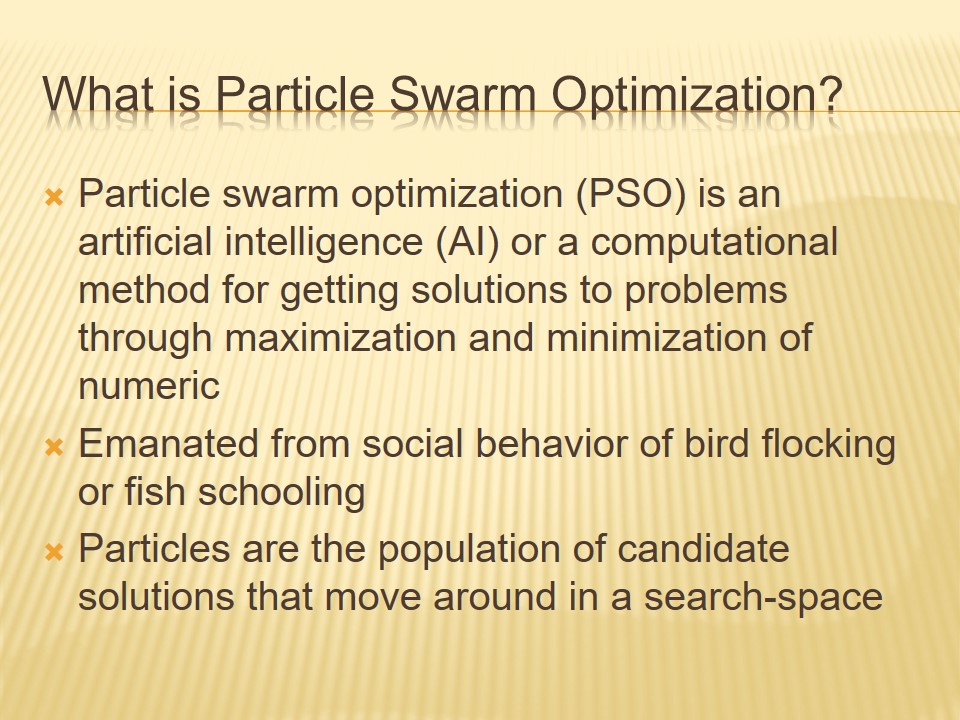
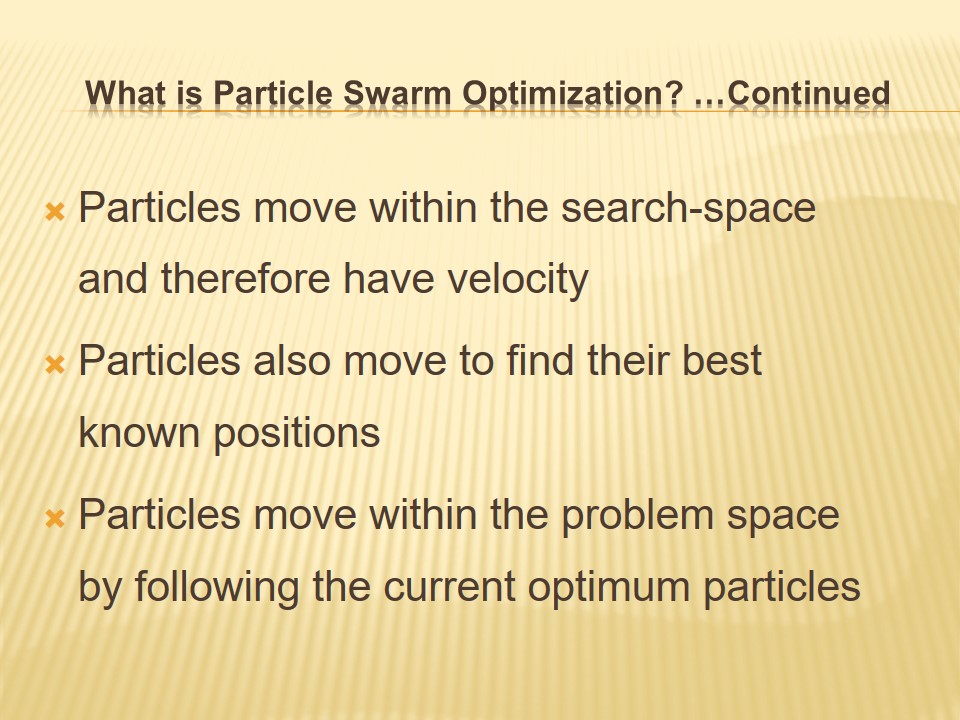
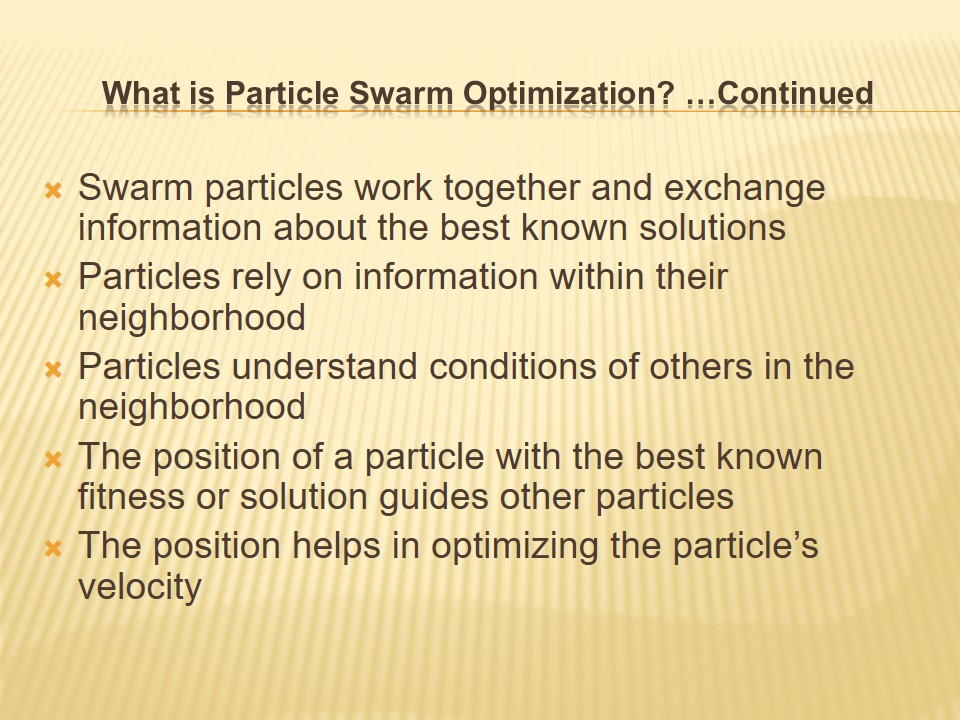
How is It Optimized?
- Particles change their positions to new ones.
- Particles move by changing their velocity.
- Adjustment of velocity involves:
- A n improvement in current velocity.
- A focus in the direction that can offer the best solution.
- A focus in the direction that can offer best solution.
- The new velocity leads to the current position, which bears the old position and the new velocity.
- A change in position depends on an individual’s comfort and what society considers ideal.
- Particles always look for the best known solutions.
- Optimization is an iterative process.
- The PSO equation could look complex.
- Particle’s current velocity updates depend on current velocity, information available and information received from the entire swarm.
- The best available fitness or solution is the key focus of particles.
- Velocities control the movement of the particles in the problem space.
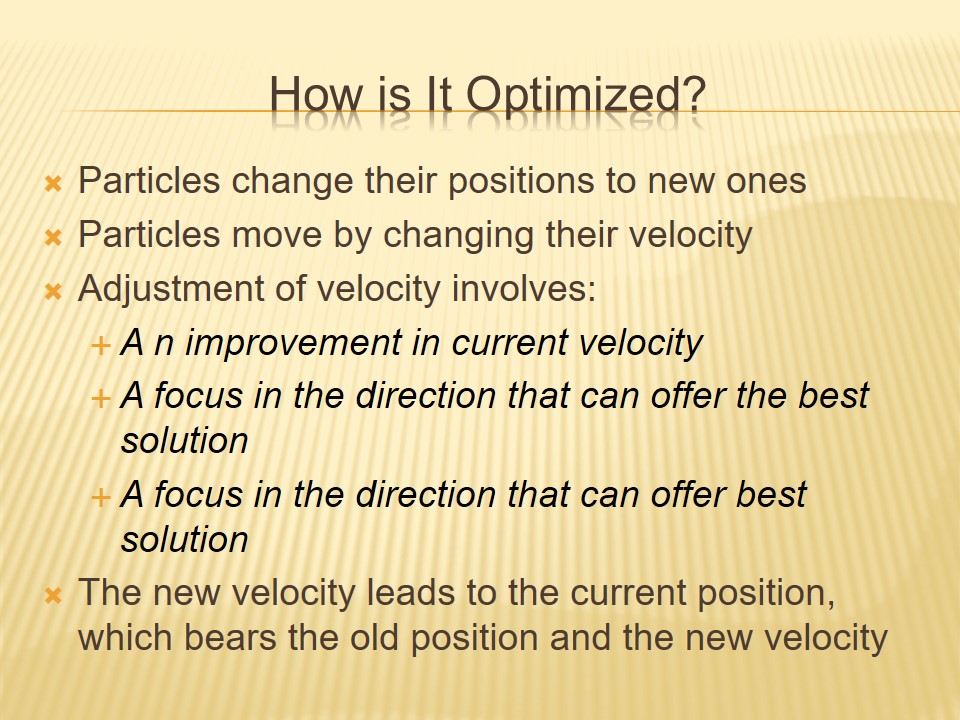
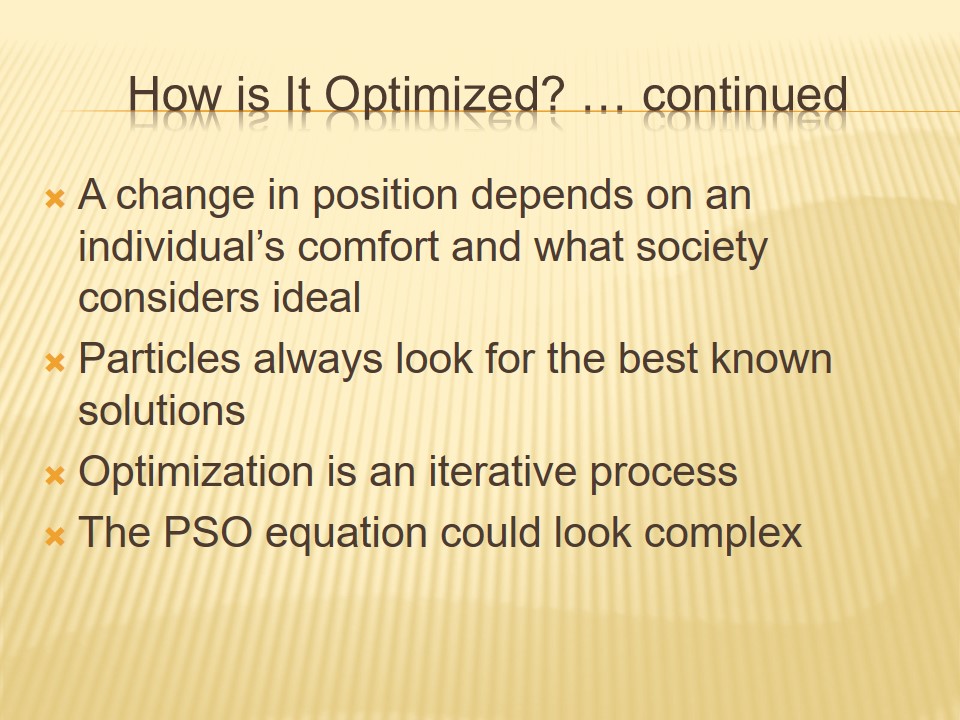
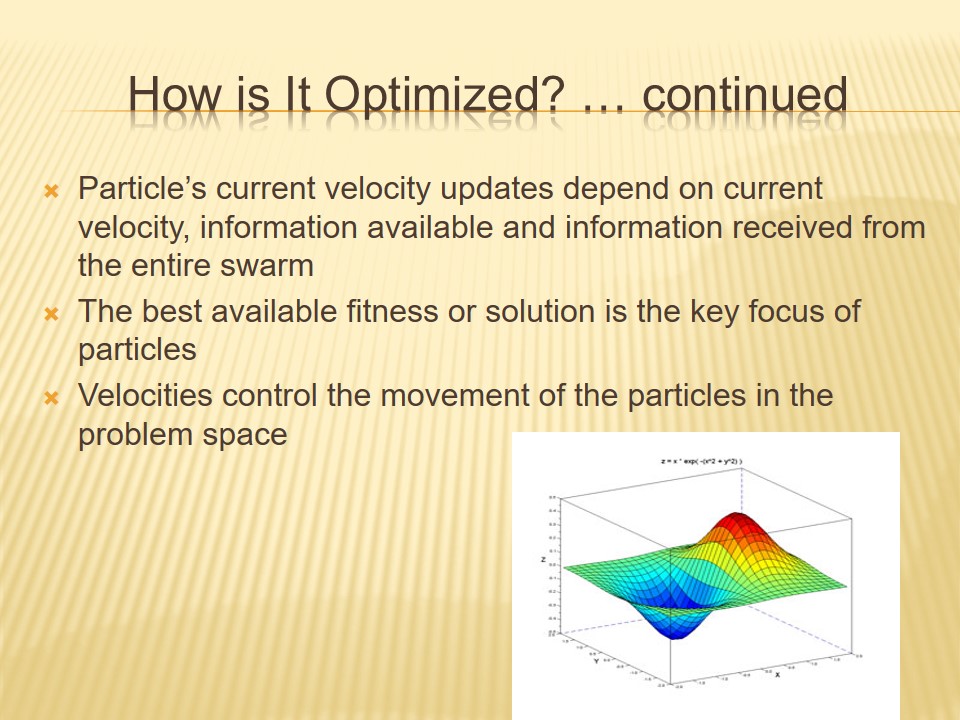
The Algorithm
- Particles bear maximum velocity, Vmax in every dimension.
- Acceleration could result in a great sum of velocity than the Vmax under the user defined parameter.
- The velocity within the dimension could be limited to Vmax.
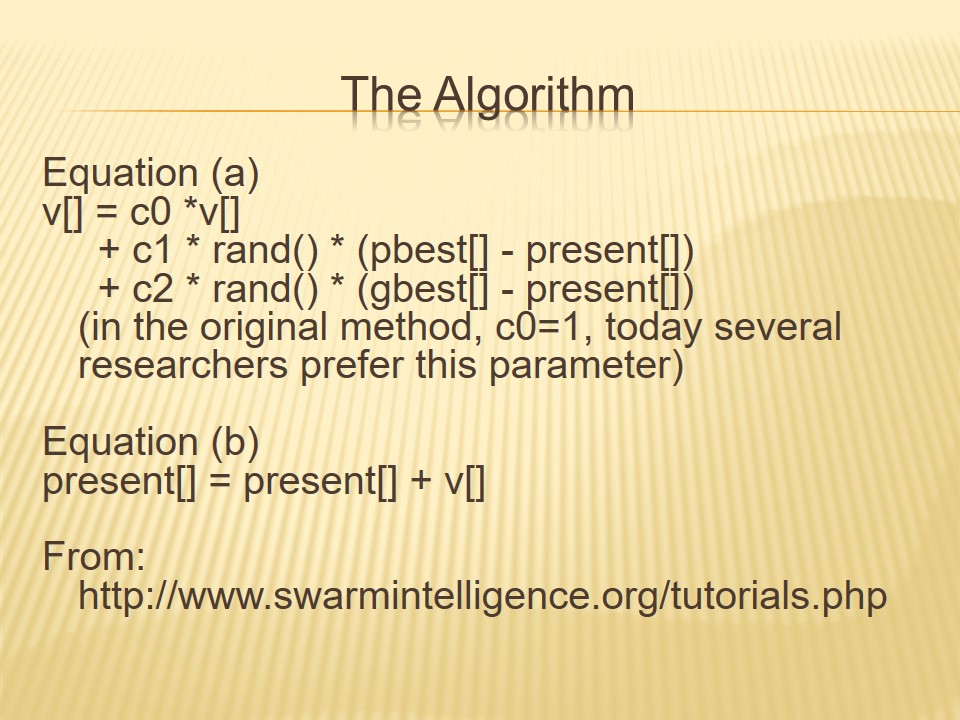
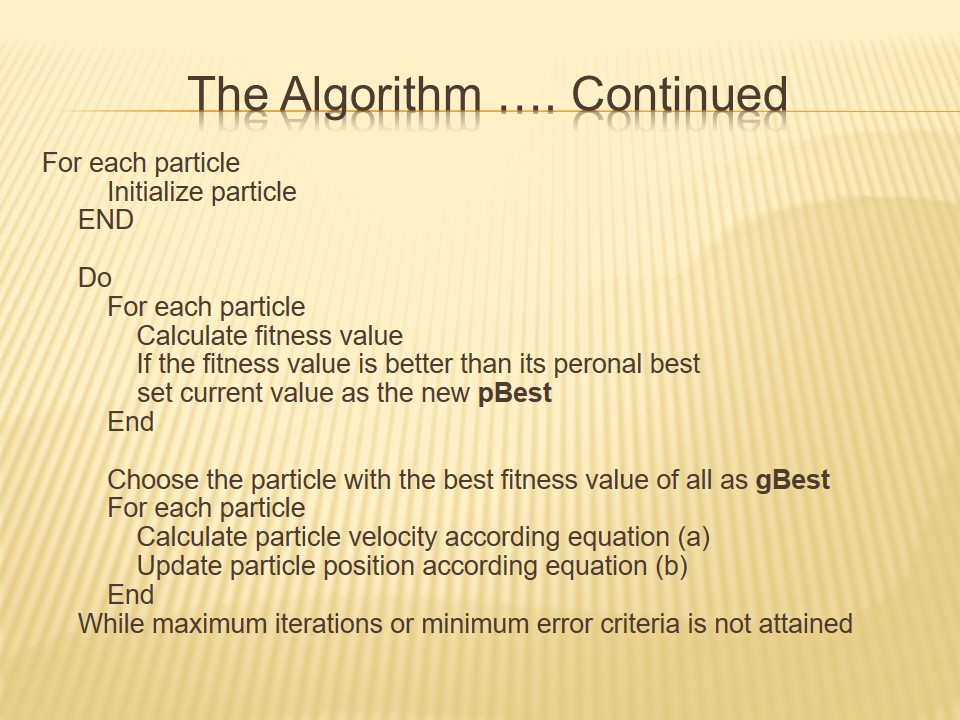
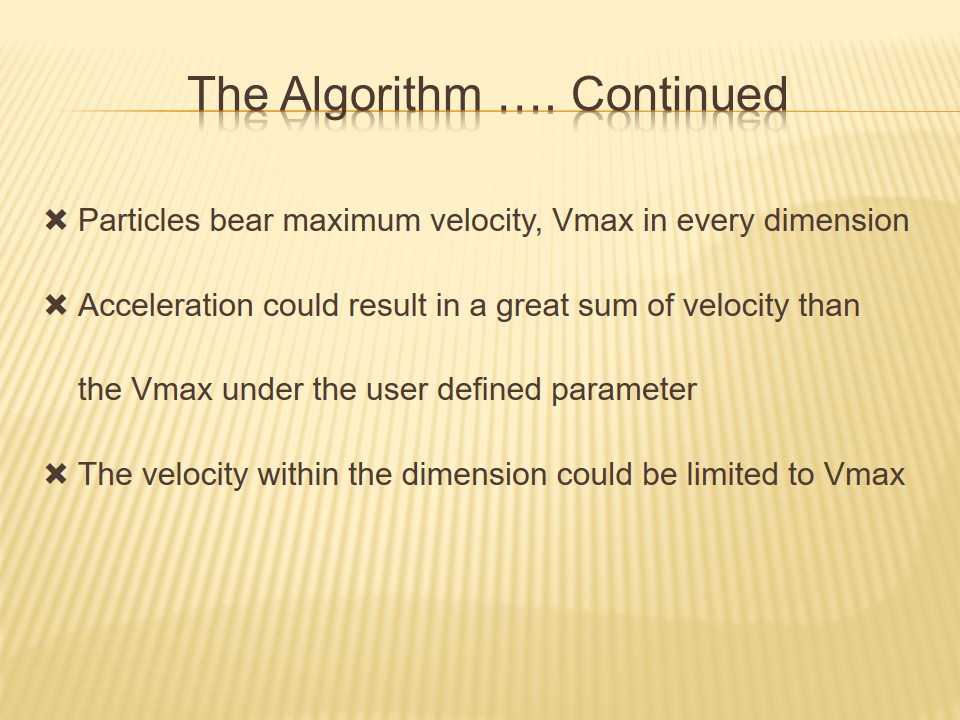
Conclusion
- The PSO is a simple algorithm for optimization.
- It is has several functions.
- Particles rely on two best values for updates, which are best values achieved so far and the best value achieved so far by any particle in the search-space.
